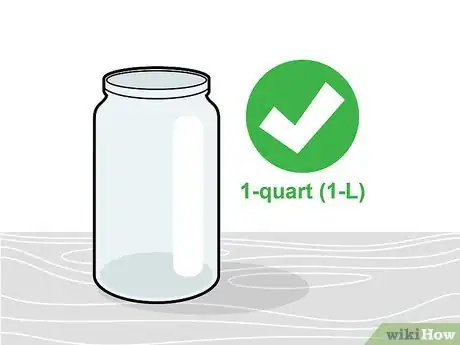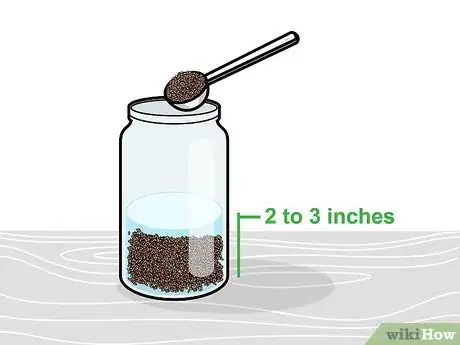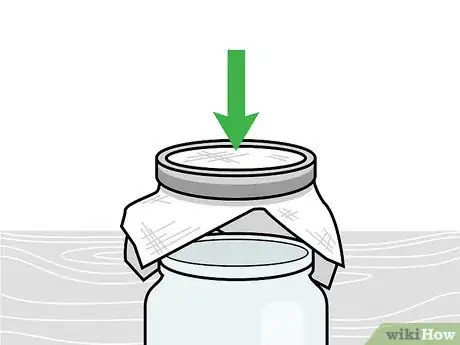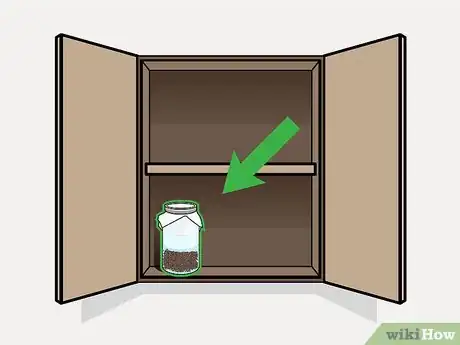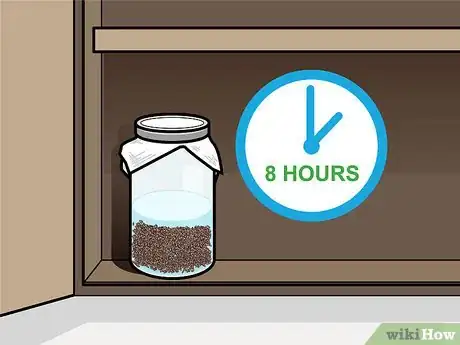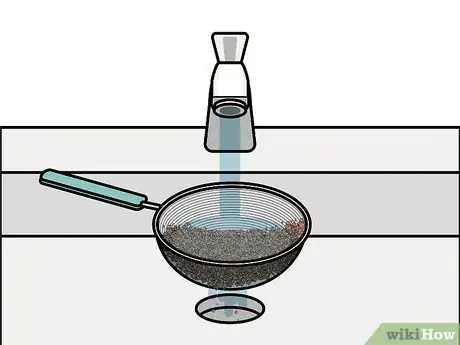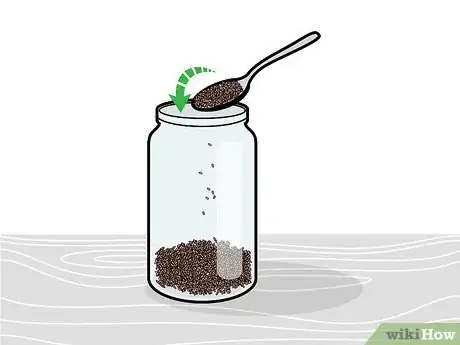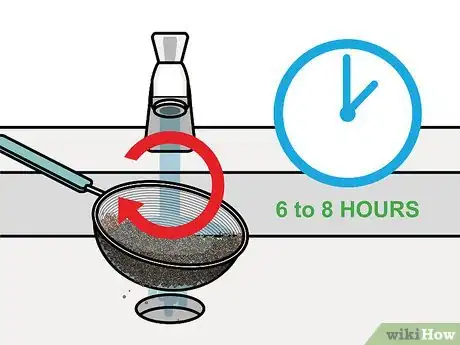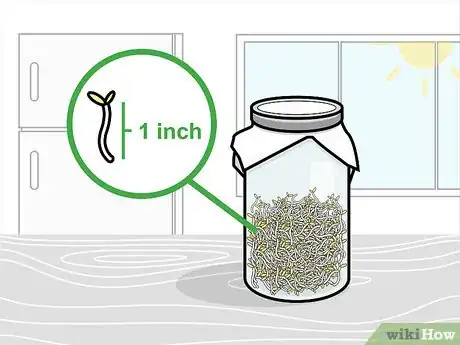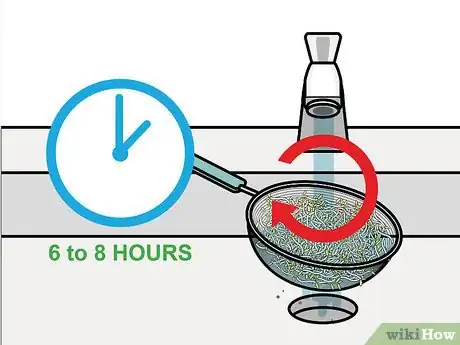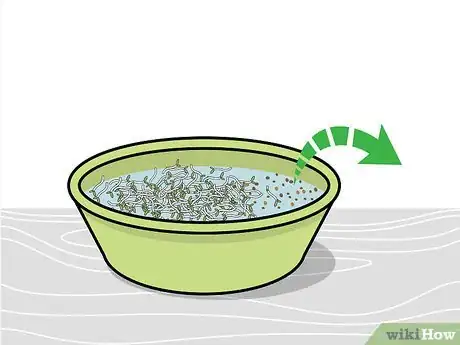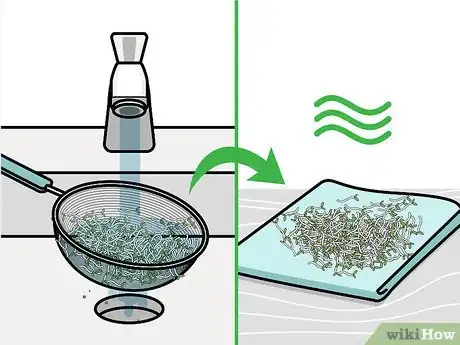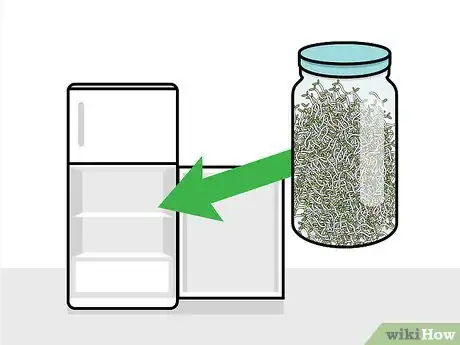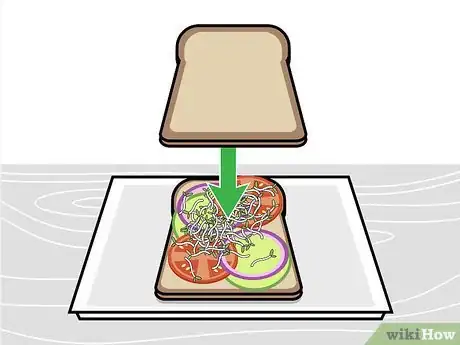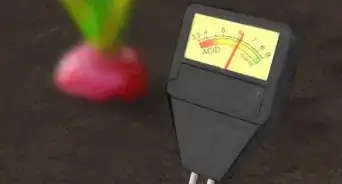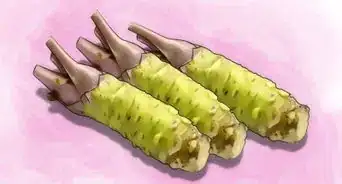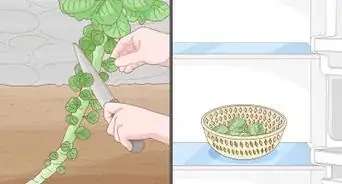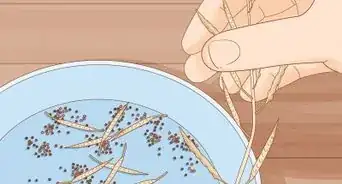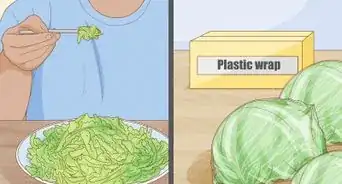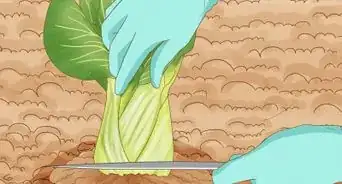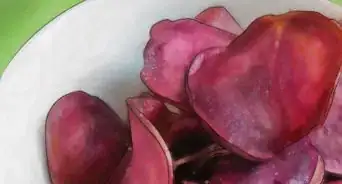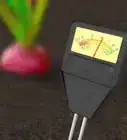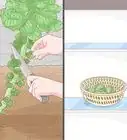This article was co-authored by Maggie Moran. Maggie Moran is a Professional Gardener in Pennsylvania.
This article has been viewed 206,180 times.
Broccoli sprouts are packed with nutrients, including carbohydrates, protein, fiber, antioxidants, and a variety of vitamins and minerals. Many grocery stores and health food stores carry broccoli sprouts, but you can also grow your own. The process involves soaking broccoli seeds overnight, and then keeping them somewhere warm and dark for the next week as they germinate. The key to healthy sprouts is regular rinsing and draining, because this will prevent mold and fungi from growing.
Steps
Soaking the Seeds
-
1Choose a 1-quart (1-L) glass or plastic jar. You can use a dedicated sprouter to sprout broccoli seeds, or you can use a clear glass or plastic jar. A mason jar is ideal, but you can also use a plastic food storage container. A 1-quart (1-L) jar will provide lots of room for the water and for the growing sprouts.[1]
- Use a sterile sprouter or jar to prevent the growth of pathogens. You can sterilize the jar by running it through the dishwasher, or by washing it in hot, soapy water.
-
2Measure the seeds. To make about 1⁄2 pound (230 g), you need to start with 3 tablespoons (44.4 ml) (45 g) of broccoli seeds. You'll also need fresh, filtered water to soak and rinse the seeds multiple times each day over the 7 to 10 days needed to grow the sprouts.Advertisement
-
3Combine the seeds with filtered water in the jar. Cover the seeds with 2 to 3 inches (5.1 to 7.6 cm) of cool, filtered water. The water should be between 60 and 70 °F (16 and 21 °C). Swirl the water and seeds around together to completely saturate the seeds. If any of the seeds float, push them down in the jar.[2]
- If you don't have a thermometer, the water should feel slightly cool.
-
4Cover the jar with cheesecloth. Place the cheesecloth over the mouth of the jar and use an elastic band or a mason jar ring to secure it in place. You can also screw on a dedicated sprouting lid with a built-in screen if you have one.[3]
- Using cheesecloth or mesh will allow airflow into the jar, but will keep dirt, bugs, and particulate out.
- You can also use a clean tea towel in place of the cheesecloth.
-
5Transfer the seeds to a warm, dark place. This will help to replicate the conditions the seeds experience in the soil, and will encourage germination. Ideal places include a kitchen cabinet, cupboard, or pantry.
-
6Soak the seeds for about 8 hours. Leave the seeds in the water in the pantry overnight, or for 8 to 10 hours. This will kickstart the germination process and help the sprouts to grow faster.[4]
Germinating the Seeds
-
1Drain and rinse the seeds. Once the seeds have been soaking for about 8 hours, remove the cheesecloth and transfer the seeds to a fine-mesh colander. Turn on the water and rinse the seeds for about a minute to remove any dirt or plant matter.
- If you're using a sprouting cap with a built-in screen, simply drain the water by slowly turning the jar upside down. Pour in some fresh water, swirl the water and seeds around in the jar, and then pour out the water again.
- After you drain the water, place the jar upside down at a 45-degree angle for 30 minutes so that all of the water in the jar drains out.
-
2Return the seeds to the jar. Use a clean spoon to transfer the rinsed seeds back to the sprouting jar. Replace the cheesecloth and secure it in place with the elastic. Place the seeds back in the same warm, dark location that you used for soaking them.
-
3Rinse and drain the seeds every 6 to 8 hours for up to 4 days. Over the next 3 to 4 days, the seeds will germinate and begin to sprout. It's important to continue rinsing and draining them frequently during this process. Regular rinsing will prevent the growth of mold and bacteria that could cause food poisoning.[5]
- As the sprouts grow, they will develop root hairs, which look fuzzy and are sometimes mistaken for mold. Root hairs help the sprouts absorb water, and they are completely normal. After rinsing, you won't even see them.[6]
-
4Move the sprouts to indirect sunlight after 3 to 4 days. When the sprouts are about 1 inch (2.5 cm) long and have grown yellow leaves, move them to a bright location to encourage chlorophyll growth. This will turn the leaves from yellow to green, and increase the amount of nutrients in the sprouts. A room temperature location, such as a kitchen counter, is an ideal place for this greening process.[7]
- Don't put the sprouts in direct sunlight, otherwise they will burn.
-
5Continue rinsing every 6 to 8 hours for another 1 to 2 days. The sprouts are still susceptible to mold at this point, so you have to keep rinsing every 6 to 8 hours as the sprouts green. Once the leaves on the sprouts turn dark green in a day or 2, the sprouts are ready to eat.[8]
Storing and Using Broccoli Sprouts
-
1Remove the hulls. When the leaves are dark green, transfer the sprouts to a large bowl. Cover the sprouts with water and gently agitate the sprouts with a clean hand to loosen the hulls. Use your hand or a small fine-mesh strainer to skim the surface of the water and collect the hulls.
- Broccoli hulls can hold a lot of water, and this can lead to premature spoilage if you don't remove them.
-
2Rinse and drain the sprouts one last time. Transfer the hulled sprouts to a fine-mesh colander to drain the water. Rinse the sprouts with clean water and then leave them to drain for about an hour. After an hour, transfer the sprouts to a clean tea towel to air dry for several hours.
- Drying the sprouts before storing them will help to preserve them longer.[9]
-
3Store leftover sprouts in the refrigerator for up to 2 weeks. When the sprouts are dry, transfer them to a mason jar or other container with an airtight lid. Transfer the sprouts to the refrigerator and store them for 1 to 2 weeks.
-
4Eat the sprouts on their own. Sprouts make for a delicious snack, and you can eat them by the ounce (28 g) for a nutrient-dense and healthy snack at any time of day. You can also eat the sprouts with a dip if you like, such as:
- Hummus
- Vegetable dip
- Spinach dip
- Yogurt sauce
-
5Add the sprouts to salads. Sprouts are the perfect addition to any salad because of their crispness and mild flavor.[10] Once you've assembled your salad, finish it by sprinkling a handful of fresh broccoli sprouts on top. You can drizzle the salad with oil and vinegar, or dress it with your favorite dressing, such as:
- Ranch
- Caesar
- Fruity vinaigrette
- Blue cheese
- Italian
- Poppy seed
-
6Use them as a sandwich topping. Just like with salads, fresh sprouts are also great for sandwiches because they're mild but add a bit of crunch. For a quick and easy vegetable sandwich, toast and butter two pieces of your favorite bread, add some sliced tomato, avocado, and onion, and top everything with an ounce (28 g) of sprouts.
- For a slightly more gourmet sandwich, don't toast the bread at the beginning. Instead, add a few slices of your favorite cheese and finish the sandwich in a panini maker.
- You can add sprouts to any type of sandwich you like, such as a Reuben or a BLT.
Expert Q&A
Did you know you can get expert answers for this article?
Unlock expert answers by supporting wikiHow
-
QuestionHow long does it take to make broccoli sprouts?
 Maggie MoranMaggie Moran is a Professional Gardener in Pennsylvania.
Maggie MoranMaggie Moran is a Professional Gardener in Pennsylvania.
Home & Garden Specialist
-
QuestionWhat do broccoli sprouts taste like?
 Maggie MoranMaggie Moran is a Professional Gardener in Pennsylvania.
Maggie MoranMaggie Moran is a Professional Gardener in Pennsylvania.
Home & Garden Specialist
-
QuestionHow do you make a sprouting jar?
 Maggie MoranMaggie Moran is a Professional Gardener in Pennsylvania.
Maggie MoranMaggie Moran is a Professional Gardener in Pennsylvania.
Home & Garden Specialist
Things You'll Need
- 1-quart (1-L) glass jar
- Broccoli seeds
- Water
- Cheesecloth
- Elastic band
- Fine-mesh colander
- Large bowl
References
- ↑ https://sproutpeople.org/growing-broccoli-sprouts/
- ↑ https://sproutpeople.org/growing-broccoli-sprouts/
- ↑ http://www.urbanorganicgardener.com/2015/11/how-to-grow-broccoli-sprouts-at-home-super-healthy/
- ↑ https://wholelifenutrition.net/articles/recipes/how-make-broccoli-sprouts
- ↑ http://www.urbanorganicgardener.com/2015/11/how-to-grow-broccoli-sprouts-at-home-super-healthy/
- ↑ https://www.cleaneatingkitchen.com/how-to-grow-broccoli-sprouts/
- ↑ http://www.urbanorganicgardener.com/2015/11/how-to-grow-broccoli-sprouts-at-home-super-healthy/
- ↑ https://sproutpeople.org/growing-broccoli-sprouts/
- ↑ https://sproutpeople.org/growing-broccoli-sprouts/
About This Article
To grow broccoli sprouts, start by combining your seeds with filtered water in a glass jar. Cover the jar with cheese cloth or a clean tea towel and hold the cover in place with an elastic band. Next, place the jar in a kitchen cupboard for 8 hours before draining and rinsing the seeds. Return the seeds to the jar, cover it, and return it to the cupboard. Over the following 4 days, rinse and drain the seeds every 8 hours. Then, transfer the sprouts to a place with indirect sunlight and continue rinsing them until the leaves turn dark green. For tips on how to eat sprouts and where to store them, read on!
